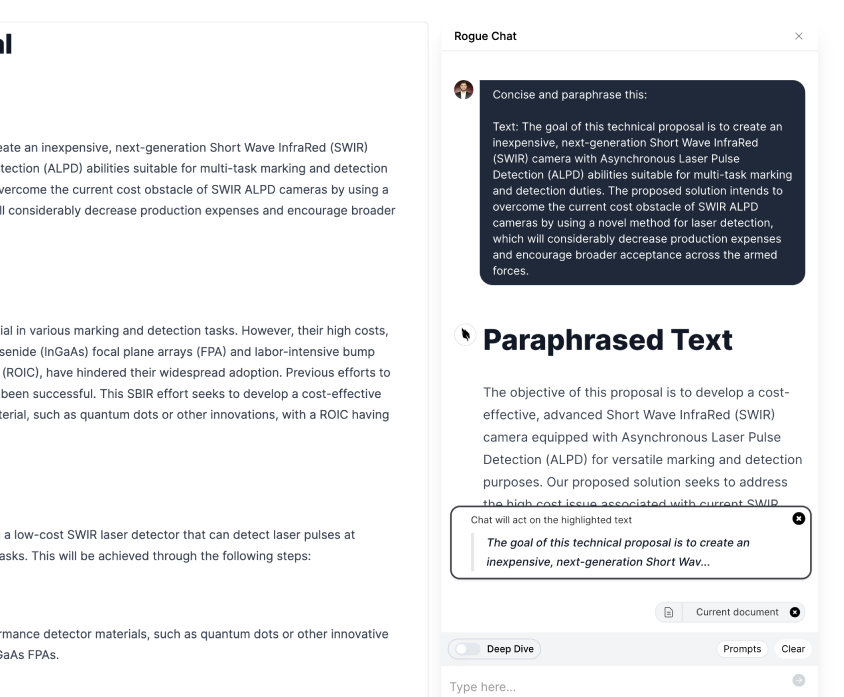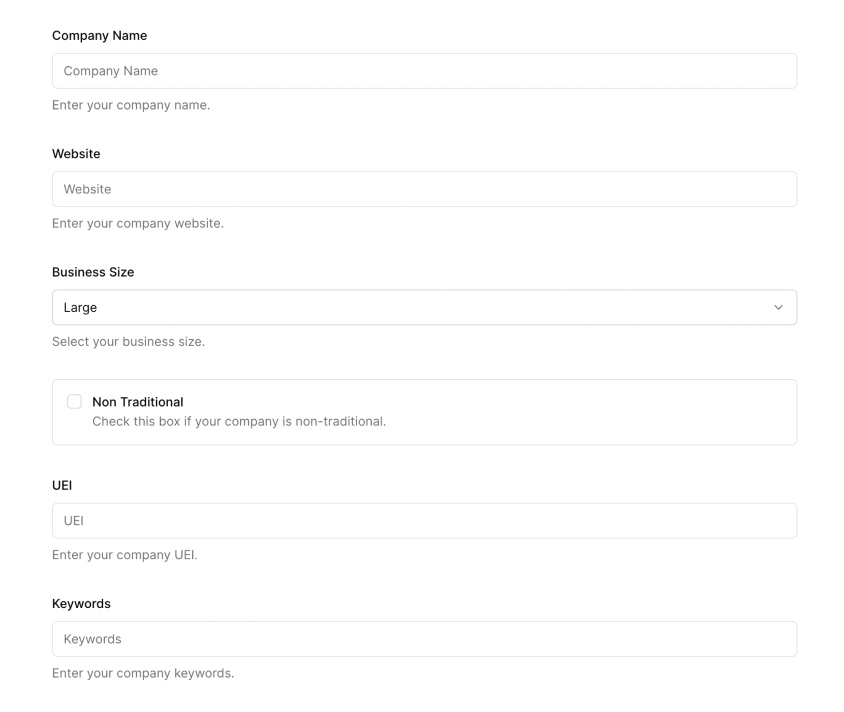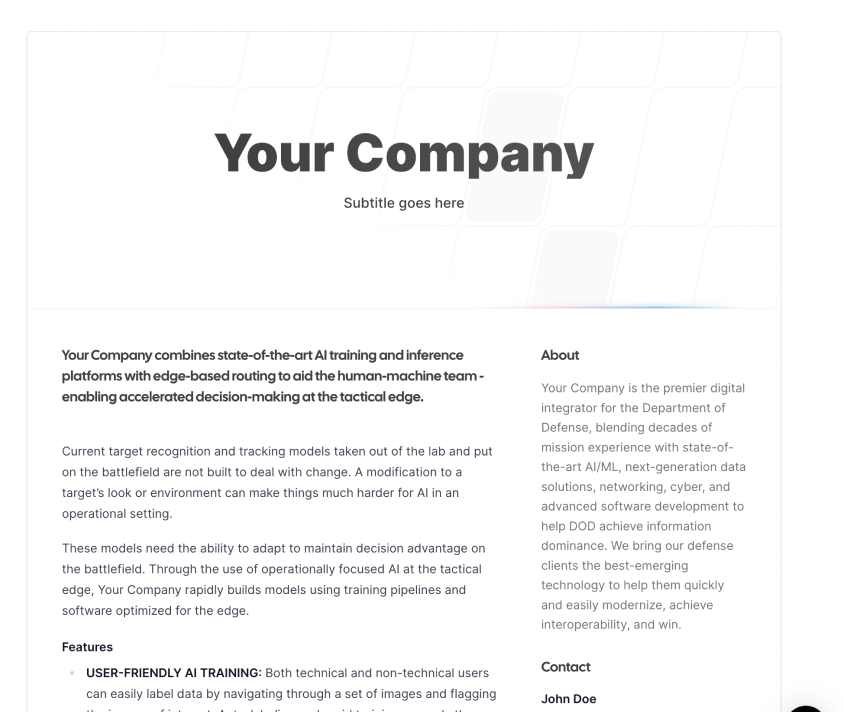
The End of Year Burn is Coming.
Do you know how to catch the magical "end of year fall out dollars"? Do you know how to turn your Selected but not Funded (SNF) SBIR proposals into an EOY gold mine? If not, read on.
Table of contents
What is this burn, and why should I care?
Are you aware that this fiscal year is tough for government?
Why? Because they are JUST NOW receiving their full funding for the ENTIRE fiscal year. What does that mean? It means your potential government customers have about 6-8 weeks to spend their money.
Now, they’ll spend it in order, first will go the operations and maintenance funding, because that money HAS to be OBLIGATED no later than September 31st, or lese it gets sent back to the U.S. Treasury. Next, they’ll spend research and development money, which has a longer shelf life, R&D money has two years to obligate, which means they have about 16 months to obligate it all. However, they need to obligate it as fast as possible too because if they roll into the next fiscal year with a lot of leftover money then their challenge next year only gets bigger, like a snowball. Procurement and other types of money will go last, they have years to burn that stuff.
Now, that’s just obligation, obligation means it is on a contract. But, government agencies also have EXPENDITURE targets. Typically, agencies want to be 85%-95% obligated and 50-75% expended by August. Expended means a contractor has does work and invoiced, this is harder to do when the fiscal year is coming so shortly. That is unless you’re selling things like software or prepaying for implementation or other services.
So, how do you win in this environment?
You need capabilities, contacts, and contract
Secrets of the end-of-year spend
Capabilities first. As noted, things that apply to operations and maintenance (O&M) obligations are the easiest on which to spend. O&M funds are all about current-year operations, so no long-term purchases. This money is used for basic stuff like fixing up buildings, paying utility bills, and making sure communication services are up and running. It also covers maintenance for equipment, supplies like office and cleaning products, and services like janitorial and security. Additionally, it includes training and travel for maintenance staff, IT support, and ensuring health and safety compliance.
Hot tip: if you can make your product into a service, the government can pay for it with O&M. Not sure what that means, look up “COCO ISR Services”, the government buys all sorts of things as services.
Second, contacts. This should go without saying, but when the government is looking to turn their full bank account into an empty bank account they’re generally not looking for new partners. Like it or not, most government folks are going to go to the contractors they know and trust, folks who already have contracts with ceiling and scope. If you don’t have these relationships already, you might be out of luck. But, if you DO have contacts with customers, it doesn’t hurt to hit them up and say “hey, do you have expiring funds? We could do xyz”. The key is to have a valuable solution to their current problem: spend their budget without wasting it.
Third, contracts. As stated, if you have current contracts, take a look at the ceiling (how much total money is allowed to be put on the contract) and the scope (what that contract is allowed to buy) and see what you could offer your customer within those limits.
“But I don’t have any contracts!”
A common problem, particularly for new folks.
Question: do you have any selected but not funded Small Business Innovative Research (SBIR) proposals?
Did you know that these are basically unfunded but awardable proposals? Anyone could turn around and award a contract for one of those proposals, without additional competition. You could just call up a contact and say “hey, do you have expiring funds? we could do xyz for you on the SNF topic”. They may not know that they can use your SNF SBIR that way, so you need to inform them.
How do you go about doing this?
Selectable but Not Funded SBIR Secrets
Build and Organize Your Proposal Repository
Alright, let’s kick things off with the basics. If you’ve got a stash of SNF SBIR proposals, keeping them organized is crucial. Think of it like tidying up your workspace—everything should be in its place so you can grab what you need without any hassle.
Start by using tools like Google Drive or Trello to create a structured digital repository. Here’s a simple way to do it:
- Create a Main Folder: Label it something clear like “SBIR Proposals.”
- Subfolders for Each Proposal: Inside the main folder, have separate folders for each proposal. Name these clearly so you can find them easily.
- Executive Summaries: Each subfolder should include a brief overview of the proposal. This is your quick pitch, so make it punchy.
- Detailed Budgets: Break down costs and justify them clearly. Show the potential funders that every dollar has been thought through.
- Methodologies and Objectives: Lay out your approach and what you aim to achieve. Make it easy for someone to see the value of your work at a glance.
- Letters of Support: Gather endorsements from stakeholders or potential partners. These can add significant weight to your proposals.
Regularly update these documents and review the repository monthly to keep everything current. This way, when an opportunity pops up, you’re ready to go.
Develop Key Relationships
Building relationships with key decision-makers in government agencies is like networking on steroids. These aren’t just LinkedIn connections; these are the folks who can actually get you the funding you need. Here’s how to go about it:
- Engage Regularly: Don’t wait until you need something to reach out. Send regular updates about your work, successes, and even challenges. It keeps you on their radar.
- Attend Industry Events: Conferences, workshops, and seminars are gold mines for networking. Make sure you’re attending relevant events and making meaningful connections.
- Use Social Media: Platforms like LinkedIn and Twitter can be incredibly useful for keeping in touch with industry insiders. Share insights, comment on posts, and make your presence known.
The key is to be consistent and genuine. Build these relationships with a long-term perspective. Remember, people are more likely to help out someone they know and trust.
Monitor Fiscal Year-End Spending
Now, this is where things get interesting. Government agencies often find themselves with leftover budgets as the fiscal year comes to a close. They need to spend this money quickly, and that’s where you come in.
- Stay Informed: Keep an eye on fiscal year-end spending patterns. Some agencies are known for having funds left over, and they need to allocate these quickly. Use tools like the Federal Procurement Data System (FPDS) or GovWin to stay ahead of the game.
- Network with Insiders: Sometimes, the best information comes from the grapevine. Your contacts within agencies might give you a heads-up about upcoming spending opportunities.
- Be Ready to Pounce: When you know that an agency is looking to spend, make sure your proposals are front and center. Have your pitches ready, and ensure your proposals are easily accessible.
This approach requires a bit of vigilance, but the rewards can be substantial. For example, a contractor who closely monitored FPDS noticed a spike in last-minute awards from a particular agency and successfully pitched their SNF proposal just in time to secure funding. Knowing where the money is going before it’s even been allocated gives you a massive advantage.
Proactive Outreach and Marketing
Don’t wait for the money to come to you. Go out and get it. As the end of the fiscal year approaches, start reaching out to your contacts within government agencies. Here’s how to do it effectively:
- Personalized Emails: Send targeted emails to decision-makers, highlighting how your SNF proposals align with their current priorities. Make it clear that your projects are ready to go and can be quickly funded.
- Marketing Materials: Create brochures, presentations, and one-pagers that succinctly convey the benefits of your proposals. These should be polished, professional, and to the point.
- Follow-Up: Don’t be afraid to follow up. A gentle reminder can keep you top-of-mind as agencies scramble to allocate their remaining budgets.
Think of this as your pre-game warm-up. You want to be in the right place at the right time, and a little proactive outreach can make all the difference. When reaching out, tailor your emails to highlight how your SNF proposals align with the agency's current priorities. Include polished marketing materials such as brochures and one-pagers. For follow-ups, consider a cadence of an initial email, a reminder after one week, and a final check-in after two weeks. One contractor found that a well-timed follow-up email led to a meeting with a decision-maker who had funds to allocate quickly.
Facilitate Quick Contracting and Execution
When an agency shows interest, you want to move fast. Have all your ducks in a row so you can jump into action immediately.
- Prepare Documentation: Ensure all necessary documentation is ready and compliant with government standards. This includes contracts, non-disclosure agreements, and any other legal requirements.
- Demonstrate Readiness: Show that you’re ready to start the project immediately. This could be through detailed project plans, timelines, and resource allocation.
- Highlight Past Successes: If you’ve successfully executed similar projects before, make sure to highlight this. It builds trust and shows that you can deliver on your promises.
The goal is to make it as easy as possible for the agency to say yes and get the project started. Prepare all necessary documentation, including contracts, non-disclosure agreements, and compliance forms. Create a project plan template that outlines timelines, milestones, and resource allocation. Highlighting past successes can also build trust. One company shared their detailed project plan and timeline during the initial meeting, impressing the agency with their readiness and securing the contract on the spot.
Leverage Flexible Contracting Mechanisms
SBIR awards provide a flexible contracting vehicle, which can be a significant advantage. Even if your proposal was SNF, other government agencies can still award you a sole-source contract for the product or services developed under the SBIR.
- Educate Your Customers: Many contracting offices might not be fully aware of how SBIR funding mechanisms work. Take the time to educate them on how these can be used to their advantage.
- Highlight the Flexibility: Emphasize that SBIR proposals can be quickly adapted to meet various agency needs without the need for a lengthy bidding process.
- Showcase Success Stories: Provide examples of other companies that have successfully used SBIR funding to secure additional contracts. This can help build confidence in your potential customers.
This approach can turn your SNF proposals into valuable assets, providing a streamlined path to securing additional funding. Educate your customers on SBIR's flexibility by providing a step-by-step guide on how these mechanisms work. For instance, schedule a meeting with the contracting office and walk them through the process using real-world examples. Highlight success stories where other companies have leveraged SBIR funding to secure additional contracts. One company used this approach to educate a contracting office about SBIR Phase III, leading to a swift contract award.
Practical Tips from the Field
Here are some tried-and-true tips from others who have walked this path:
- Tailor Your Proposals: Each agency has its own language and priorities. Customize your proposals to fit their specific needs and vernacular.
- Attend SBIR/STTR Road Shows: These events are invaluable for networking and gaining insights directly from program managers. Direct interactions with program managers can provide crucial guidance.
- Shop Around: Don’t put all your eggs in one basket. Actively seek out different agencies and departments that might be interested in your SNF proposals. Persistence can pay off.
Tailor your proposals to fit each agency’s specific mission and vernacular. For example, one contractor reworded their pitch to match the language used by a particular agency and saw a significant increase in interest. Attend SBIR/STTR road shows to network and gather insights directly from program managers. Persistence pays off; one contractor shared that by actively shopping around their SNF proposals, they eventually secured funding from an unexpected agency.
Sign up for Rogue today!
Get started with Rogue and experience the best proposal writing tool in the industry.



